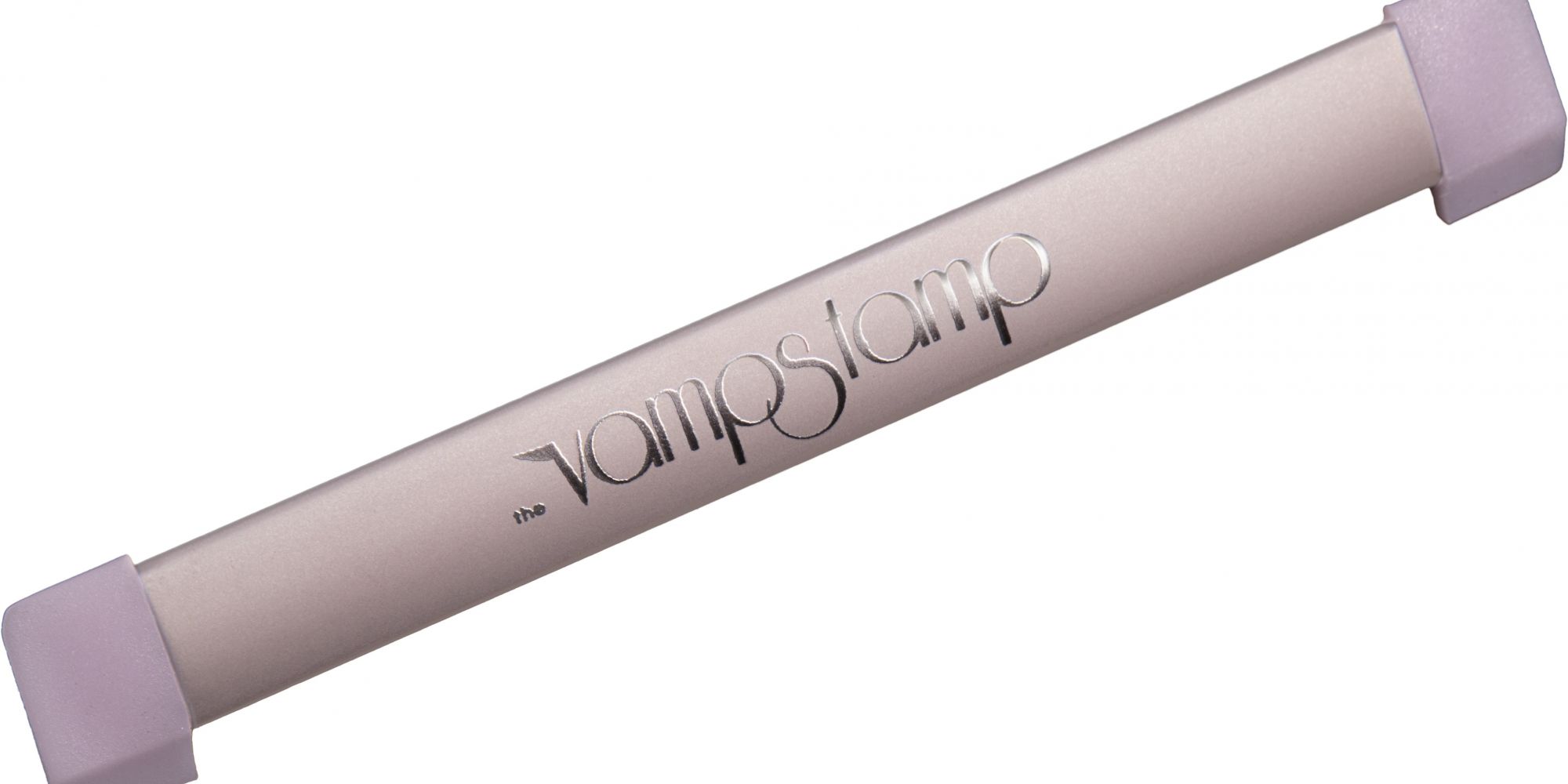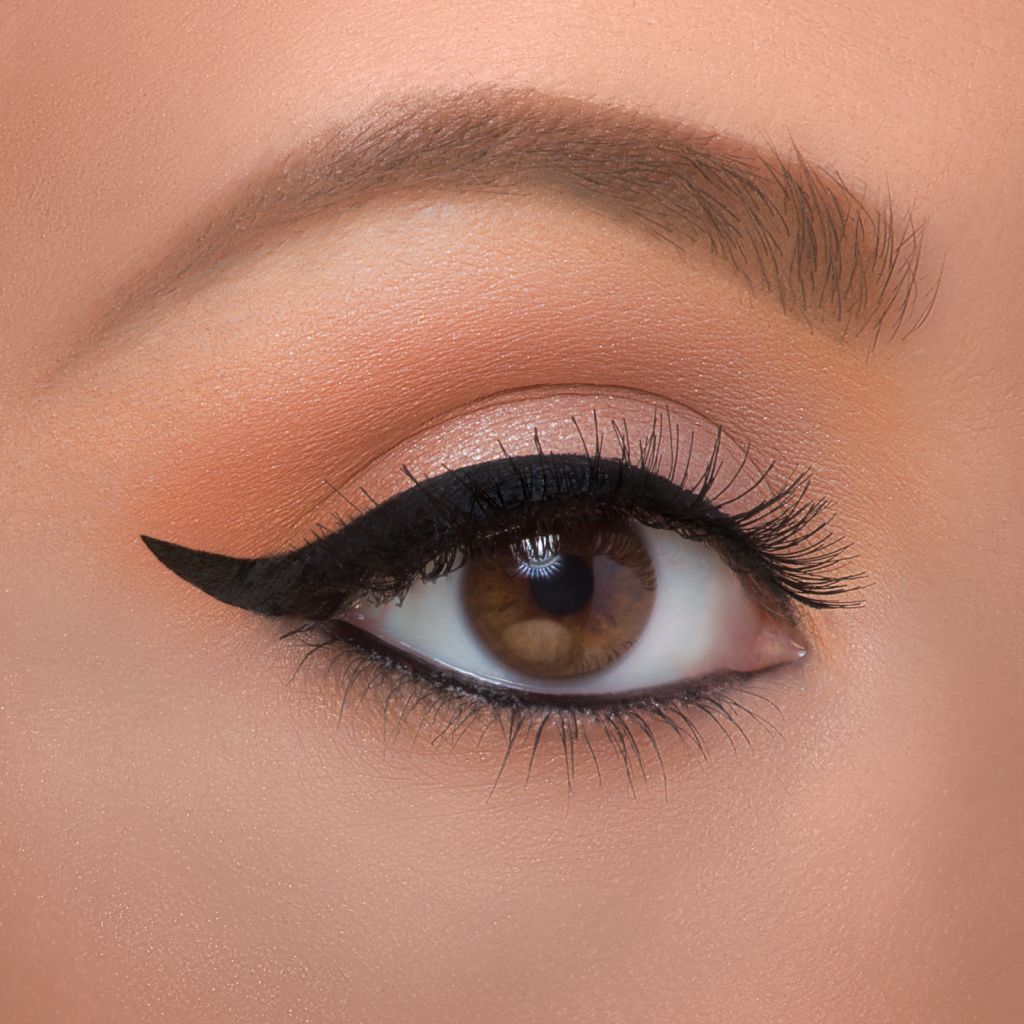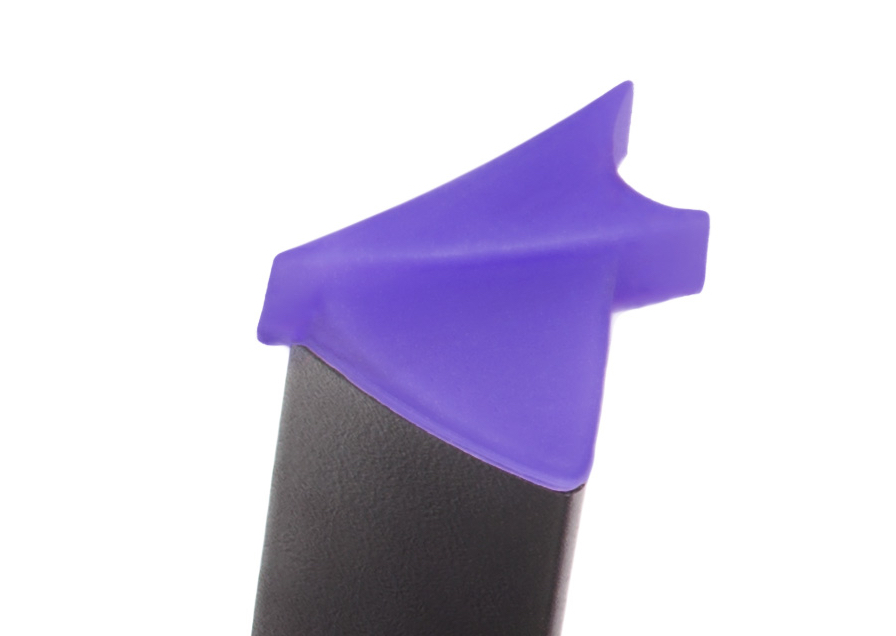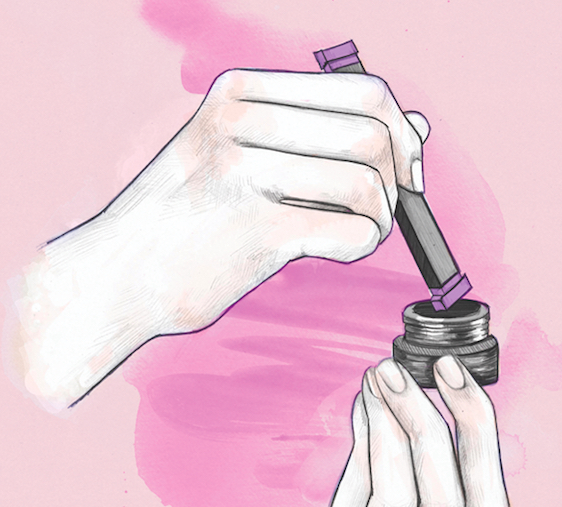
The Pitfall Of Popularity: Inside The Vamp Stamp’s Uphill Battle Against Counterfeiters
A mere three weeks after The Vamp Stamp made its debut in March 2017, founder Veronica Lorenz spotted rip-offs of the brand’s patented winged liner tool on eBay. “There were hundreds of them. I was extremely emotional and upset, to say the least,” she recalls. “How would you feel if your baby was being counterfeited?”
Since then, The Vamp Stamp’s copycat problem has only intensified. The brand has spent some $300,000 on legal fees, a private investigator and software to combat it. Its sales have been impacted, decreasing from $70,000 to $10,000 a month on Cult Beauty due to flare-ups of replicates online. The Vamp Stamp’s experience demonstrates the speed at which counterfeit products spread and the harm they cause.
The Vamp Stamp CEO Dean Factor, former CEO and founder of Smashbox Cosmetics, points to digital marketplaces as the primary culprits. They disseminate counterfeit products by providing venues for unauthorized sellers. “We know who they are. We send them letters. When a new one [seller] pops up, most of the time they take it down,” he says. “The ones that don’t are the ones that cause the most damage, and they are really impossible.”

THE IMPOSTER SITUATION
The Vamp Stamp’s winged liner stamps are priced at $25 and constructed out of food-grade silicone. The counterfeits are sold for well under $25. “If you search Vamp Stamp on Google, it’s very obvious which ones are ours and which ones are fakes,” says Factor. “If it is $9, it’s definitely not a real product.” He adds fakes aren’t constructed out of quality materials and don’t perform at the level of The Vamp Stamp’s merchandise. “We get one to two emails a day from customers saying, ‘We bought your product, and it dried out right away,’” reports Factor, discussing purchasers of counterfeits. “Then, there are customers who maybe don’t call or email. They may be upset with the product and never buy it again.”
Factor details that fraudulent The Vamp Stamp products typically start their lives in a Chinese factory and wind up in the hands of sellers around the world. The sellers may not realize they’re hawking counterfeits. Factor detected counterfeits on Instagram and posted on the account selling them that the products were fake to alert customers as well as the account holder. The Lebanon-based account holder swore to Factor that the products were real. He paid her $500 to take the products down, and she did. “She had no idea. She’s a mom. She didn’t have a lot of money. The money she spent to get the product was a lot to her. When I said $500, she said, ‘Absolutely, I’m in,’” says Factor. “That’s not all the people, but it’s some of them.”
On the flipside, there are sellers like Kelly Phan. Factor describes Phan as a seller on Mercari, an app that calls itself “the fast and easy way to sell or buy almost anything,” that persistently purveys counterfeits. “I have hired a private investigator. I have sent countless emails to them, and, now, they have actually blocked our email address. They know what they are doing. I have told them what they are doing,” says Factor. “We will go after the person [Kelly Phan] selling on Mercari. It’s been going on for too long, and they won’t stop.” Beauty Independent contacted Mercari to comment about The Vamp Stamp counterfeits sold on its platform and received no response.

CHASING THE CULPRITS
Factor pinpoints Mercari as among the worst counterfeit-propagation offenders. He doesn’t mince word about its counterfeit-protection practices. “They will take them down and, the next day, they allow the same seller to put the same exact listing back up,” says Factor. “If you read their policy online, they say, ‘We will not allow counterfeit products.’ Really, it’s a bunch of B.S.” He laments that fakes available on Mercari have been detrimental to The Vamp Stamp’s business. Factor says, “When Mercari takes a listing down, sales on our website go up and, as soon as the counterfeits go back up, our website sales go back down.”
Other e-commerce platforms have been home to rip-offs, but The Vamp Stamp has been able to have the fakes removed from them. Factor commends Wish and Alibaba for being prompt at eradicating counterfeits when they’re notified about them. He also compliments Shopify, the e-commerce software company, for shuttering sites it hosts that are counterfeit The Vamp Stamp sites. Amazon has been a trickier beast. Factor explains the e-tail giant insists brands buy the counterfeit product to confirm that it’s indeed counterfeit before it’s pulled from Amazon. “I purchased one that was being sold from China, and it took over a month to get here,” says Factor. “Once I got it, Amazon is showed that I received it and, then, you can go forward with them, but the seller was allowed to sell it for over a month.”
Factor suggests Google plays a critical role in greasing the wheels of counterfeit sales. He’s not a fan of Google’s advertising policies permitting marketers of counterfeit products to buy advertising using The Vamp Stamp’s intellectual property. “They allow anybody to buy your key words, even if they are trademarked,” he says. A Google search of “vamp stamp” yields a list of sponsored and not sponsored results that include fake goods. Factor says that The Vamp Stamp informs Google about official sellers of its products that it allows to advertise the products. “They do take some [advertisers of counterfeits] down, but not all, and it’s very cumbersome,” he says. “They make so much money selling AdWords to counterfeiters that they don’t care.”

ACTIVE MEASURES AGAINST FAKES
The sheer volume of counterfeits makes chasing their sources an arduous and time-consuming task for The Vamp Stamp. To lift the burden a bit off Factor, Lorenz and the brand’s lawyer, the company has turned to Red Points, a copyright protection specialist. Factor outlines that The Vamp Stamp sends Red Points its trademark and product information, and Red Points’ technology scans digital marketplaces for infringements. When an infringement is identified, the brand directs Red Points to contact the seller of the fake merchandise. “It has helped,” says Factor. “The term used in the industry is whack-a-mole. You knock one down, and another one pops up. It may help knocking them down and, over time, fewer pop up. If we didn’t have it, there would definitely be a ton more.”
Pursuing companies in China producing fake products is difficult and expensive. Factor estimates, “It will cost you a minimum of $150,000 to enforce your patent and get the police in China to shut them down.” He continues, “If we were a much bigger company, we would go after the manufacturers in China and spend $150,000, but they might pop up as fast as we take them down. The allure is too great.” The Vamp Stamp is sending a comparatively inexpensive cease-and-desist letter to a Chinese factory it believes is making counterfeits. So far, the brand hasn’t brought manufacturers or sellers to court. However, Factor is considering a lawsuit against Phan, the seller on Mercari. The aim would be to recover damages suffered by The Vamp Stamp due to Phan’s sales of fake products.
The Vamp Stamp has taken a proactive step against counterfeiters by advising customers about them on its website. Under a tab on its site labeled Counterfeit Warning, it tells customers that The Vamp Stamp products available from Mercari, One Spot Beauty, DH Gate, ModeSens, Groupon, Amazon stores outside of the U.S. and eBay sellers with three-piece kits in a single box are fake. The brand specifies legitimate products can be bought from its sites, Bloomingdale’s and Cult Beauty. “People come to our website sometimes 10 or 15 times over a week or two before buying, so they are shopping around, and they are looking at those counterfeit websites before making a decision,” says Factor. “So, I think it will have an effect.”






Leave a Reply
You must be logged in to post a comment.